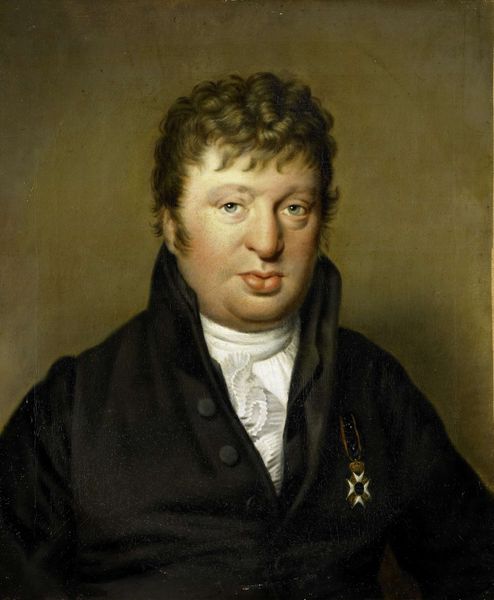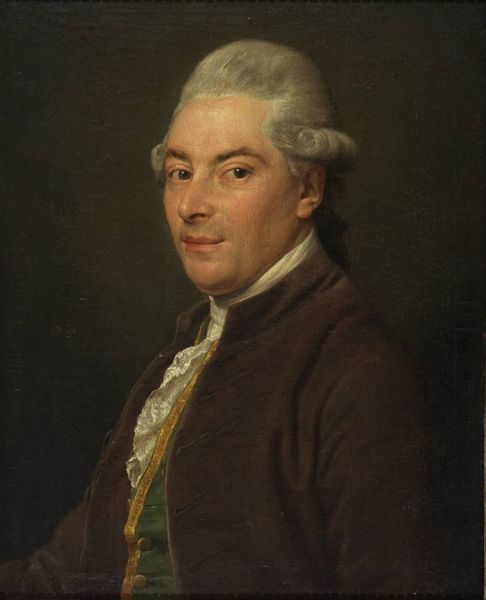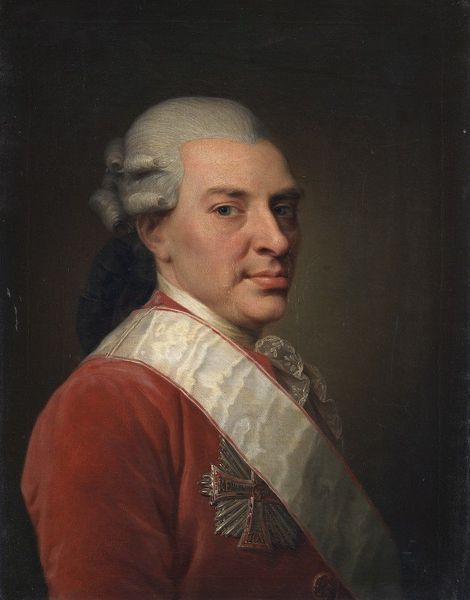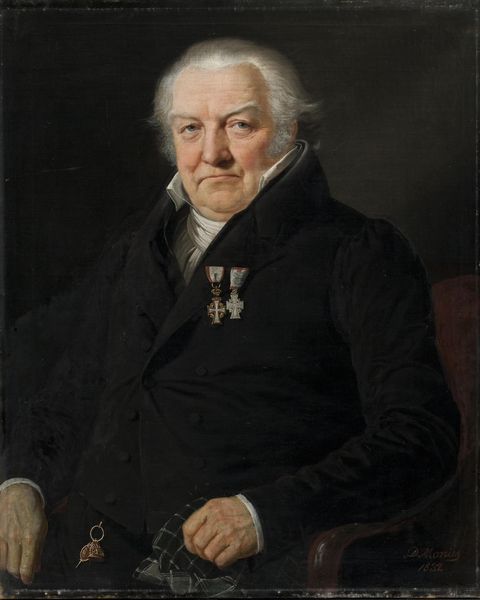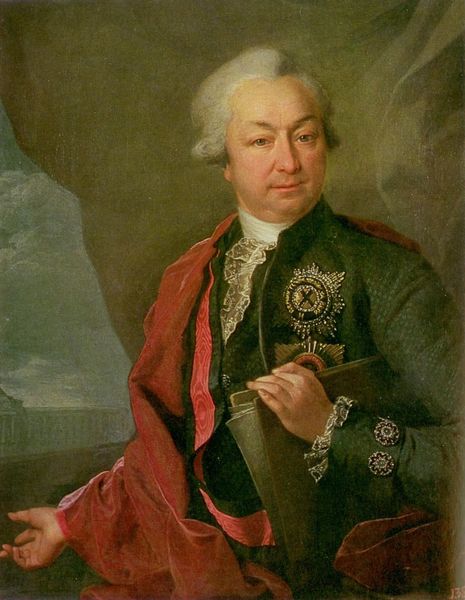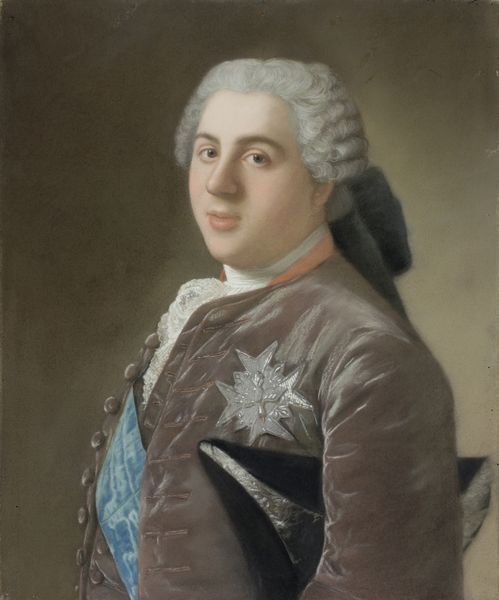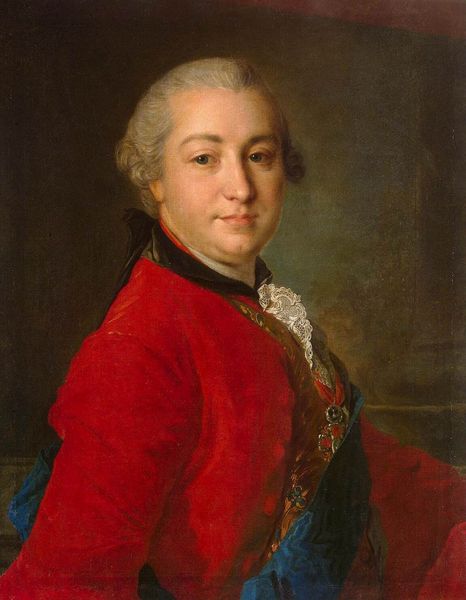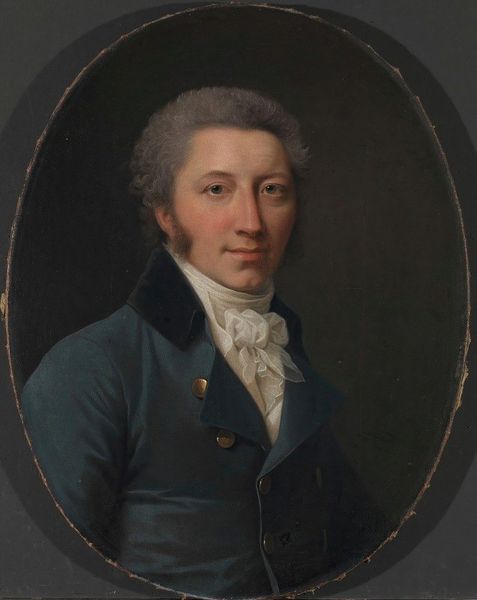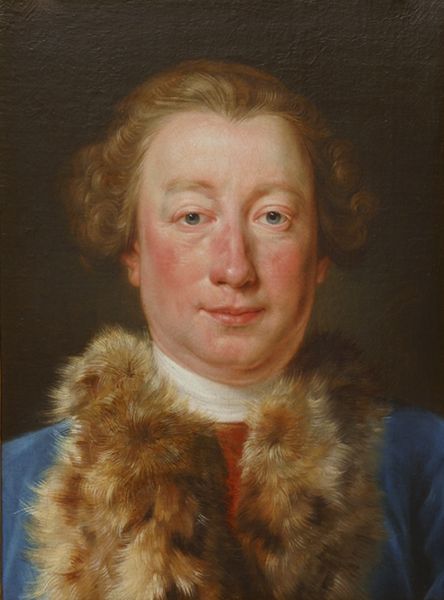
painting
#
portrait
#
figurative
#
portrait
#
painting
#
portrait reference
#
portrait head and shoulder
#
romanticism
#
animal portrait
#
animal drawing portrait
#
portrait drawing
#
facial portrait
#
academic-art
#
portrait art
#
fine art portrait
#
digital portrait
Copyright: Public Domain: Artvee
Curator: Christoffer Wilhelm Eckersberg, painted this preparatory study, “Studie til portræt af købmand Schmidt,” or "Study for a Portrait of Merchant Schmidt" in 1818. Editor: He's got a wonderful rosy glow, doesn't he? It's like he's just come in from a brisk walk in the cold. The composition is quite direct, and I get a sense of the sitter's self-assuredness. Curator: Eckersberg, often considered the father of Danish painting, was deeply influenced by Neoclassicism, but this portrait reveals a move toward greater realism. The direct gaze and the detailed rendering of the face certainly suggest that. Editor: Realism, perhaps, but there’s also a definite idealization. The skin is luminous, almost porcelain-like, and there’s a flattering softness to his features. It’s as if Eckersberg is capturing not just a likeness, but a perception of the merchant's standing in society. Curator: Exactly. Portraiture at this time served not just as documentation, but also as a form of social performance. Consider how the depiction of wealth and status reinforced social hierarchies. Commissions such as this reflected a desire among the burgeoning merchant class to align themselves with established elites through art. Editor: It's interesting how art becomes this quiet negotiator of status. The merchant wants respect, the artist needs patronage, and society gets a mirror reflecting its own values and aspirations, warts and all or perhaps without any warts! Curator: Indeed. The painting operates within a complex web of social expectations and economic realities. Without these networks portraiture simply wouldn't thrive as an art form. Editor: Looking at it now, I keep noticing how Eckersberg captured the essence of a man at a moment of transition within his society—and his very stylish hair. Thanks to this painting, Schmidt the Merchant, steps out of the shadows for us once again! Curator: A vital reminder of art's role as both mirror and marker of historical shifts, captured by Eckersberg with subtlety and precision.
Comments
No comments
Be the first to comment and join the conversation on the ultimate creative platform.
